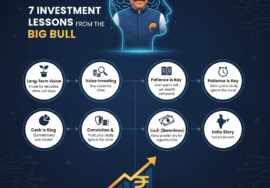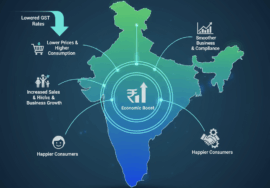Explained: What the increase in MCLR means for you, your loan
[ad_1]
State Bank of India (SBI), India’s largest commercial bank, on Monday raised the marginal cost of funds-based lending rates (MCLR) for the first time in three years, signalling that the soft rates regime that has prevailed since 2019 may be over.
Your EMIs are set to rise
SBI raised the MCLR by 10 basis points (bps) across tenures to 7.1% (from 7% earlier); it is now slightly lower than the 7.25% at HDFC Bank, Punjab National Bank, and ICICI Bank. Bank of Baroda, Axis Bank, and Kotak Mahindra Bank raised their MCLRs by 5 bps each across tenures. Other public sector and private banks are set to raise MCLRs in the coming days.
MCLR, which RBI instituted with effect from April 1, 2016, is the lowest interest rate that a bank or lender can offer. It is applicable to fresh corporate loans and floating rate loans taken before October 2019. RBI then switched to the external benchmark linked lending rate (EBLR) system where lending rate is linked to benchmark rates like repo or Treasury Bill rates.
As a result of the increase in MCLR, borrowers who have taken home, vehicle, and personal loans will find their equated monthly instalments (EMIs) rising in the coming months. With the RBI set to withdraw the accommodative policy (the willingness to expand money supply to boost economic growth), lending rates are expected to rise further in the coming months.
MCLR-linked loans had the largest share (53.1%) of the loan portfolio of banks as of December 2021. The rise in MCLR comes after the one-year median MCLR of banks declined by 95 bps between March 2020 and January 2022. The sustained decline in MCLRs in the last three years and periodic resetting of such loans at lower rates helped existing borrowers, as banks extended the benefits to them by reducing the WALR (weighted average lending rate) on outstanding rupee loans more than the policy repo rate cuts during the EBLR period.
Banks linked their EBLR to the RBI’s repo rate, which declined from 5.40% to 4% since October 2019. When the RBI hikes the repo rate, EBLR will go up and vice versa. The share of EBLR loans in total advances was 39.2% in December 2021, according to RBI.
Interest rates will rise too
According to bankers, the gradual tightening of money supply in the financial system is expected to push up interest rates. The “extraordinary” liquidity measures undertaken in the wake of the pandemic, combined with the liquidity injected through various other operations of the RBI have left a liquidity overhang of the order of Rs 8.5 lakh crore in the system.
With retail inflation hitting 6.95% in March and wholesale inflation at 14.55%, the central bank is expected to take measures to bring down prices. The tightening of the accommodative policy is normally accompanied by a rise in interest rates in the system. The US Federal Reserve recently announced a tightening of the policy and raised interest rates. The next round of rate hikes is expected around end-May-June. However, the rise in rates is likely to be gradual.
Banks expect a repo rate hike
Banks expect the repo rate — the main policy rate — to go up from June onwards as the RBI seeks to suck out liquidity from the system to rein in inflation. Indicating upward pressure on interest rates, the yield on 10-year benchmark government bonds has reached 7.15 per cent, rising 24 bps in less than two weeks. On the other hand, the cost of funds is set to increase, prompting banks to hike lending rates.
On April 8, the RBI’s Monetary Policy Committee restored the policy rate corridor under the liquidity adjustment facility to the pre-pandemic width of 50 bps by introducing the Standing Deposit Facility (SDF) at 3.75 as the floor of this corridor. SDF is an additional tool employed by the RBI to absorb excess liquidity. In essence, overnight rates were hiked to 3.75%.
In response to the 250-bps reduction in the policy repo rate since February 2019 —when the current easing phase started — the WALRs on fresh and outstanding rupee loans had declined by 213 bps and 143 bps respectively. This cycle is now being reversed.
Hike could happen in June
Analysts and bankers expect the RBI to increase the repo rate from 4% in the June policy review. “We now expect a 25-bps rate hike each in June and August, with a cumulative rate hike of 75 basis points in the cycle. Given that the spread between bond yields and repo rate jumps in an increasing interest rate cycle, bond yields could touch 7.75 per cent by September,” a research report from SBI said.
RBI has kept the repo rate unchanged in the last 11 policy reviews in a bid to boost growth. Interest rates on loans and deposits are expected to rise across the board when the repo rate is finally hiked in June or August, a banking industry source said.
Both policy rates were last reduced in May 2020 with repo at 4% and reverse repo at 3.35%, and have since been kept at these historic lows. “Deposit rates have already started moving higher, and with a lag, lending rates may move up in the first half of FY2023,” said Y S Chakravarti, MD & CEO, Shriram City Union Finance.
“The change in tone in today’s meeting, and narrowing of the LAF corridor will prepare the markets for repo rate hikes, which we expect to be 50-75 basis points in fiscal 2023, beginning with the June monetary policy review,” ratings firm Crisil had said on April 8. The pace of tightening will be guided by surprises emanating from inflation and external risks, it said.
Deposit rates will also rise
According to the SBI research report, deposit rates are likely to “increase meaningfully” over the next one-two months. SBI now offers 5.10% interest in the 1-2-year bucket. This means a fixed deposit holder is sitting on a negative return of 185 basis points, as inflation is now at 6.95%. Deposit rates in the 1-3-year bucket have fallen from 8.75-9.25% in 2013-14 to 4.90-5.15% in 2021-22, according to an RBI study on five major banks. Despite low interest rates, deposit growth increased during the pandemic years from 8% in FY20 to 11% in FY21. Many banks have increased deposit rates by up to 10 bps since February this year.
Newsletter | Click to get the day’s best explainers in your inbox
[ad_2]
Source link











